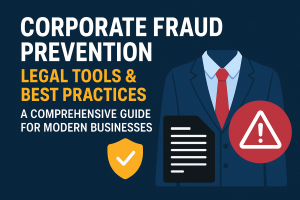📘 Understanding Revenue Merger: Process, Provisions, and Legal Support by Narendra Madhu Associates
In the world of taxation and corporate structuring, the concept of revenue merger plays a critical role. Whether you’re a business looking to simplify your tax profile or a taxpayer navigating structural changes, understanding the Revenue Merger process is essential. At Narendra Madhu Associates, we guide individuals, businesses, and professionals through every legal and procedural step to ensure compliance and strategic advantage.
What is a Revenue Merger?
A Revenue Merger refers to the merger of two or more tax jurisdictions (like revenue villages, wards, or assessing circles) or tax entities (such as PAN accounts or income tax files) under the administration of the Income Tax Department or other revenue authorities. Unlike a corporate merger, this form of merger does not relate to company structures, but rather to administrative or jurisdictional consolidation under revenue laws.
It can occur for reasons such as:
- Simplification of tax jurisdiction
- Correction of duplicate entries or PANs
- Streamlining assessment and compliance
- Administrative efficiency
When Does Revenue Merger Arise?
Examples include:
- Merging two PANs of the same entity or person (e.g., due to duplicate PAN allotment).
- Change or unification of assessing jurisdiction by the Income Tax Department (especially during faceless assessment rollouts).
- Village or ward mergers for land revenue purposes by state governments.
- Merger of Revenue Records when land parcels from two villages are amalgamated.
🏛️ Legal and Procedural Framework
As per the Income Tax Act, 1961 and guidelines by the Central Board of Direct Taxes (CBDT), the merger of revenue jurisdictions or PANs involves specific legal procedures:
1. Application / Request Filing
Application must be made to the relevant Assessing Officer (AO) or Jurisdictional Officer.
In case of duplicate PAN, Form 49A or correction request through NSDL / UTIITSL is used.
2. Verification of Records
AO verifies supporting documents (Aadhar, old and new PANs, property records, legal identity proof, etc.)
In case of land or ward mergers, patwari, tehsildar, or municipal authorities verify land revenue records.
3. Approval & Processing
CBDT or local revenue commissioner approves the merger.
Official records are updated accordingly in ITD systems, revenue registers, or land mutation registers.
4. Intimation to Stakeholder
After merger, intimation is sent to the assessee and changes are reflected on:
Income Tax Portal
Property Card or Land Records
PAN or TDS Portal
GST records (if applicable)
✅ Advantages of Revenue Merger
| Benefit | Explanation |
| ✔ Administrative Clarity | Removes duplication and jurisdictional overlap. |
| ✔ Legal Uniformity | Consolidates records under one legal framework. |
| ✔ Improved Compliance | Reduces chances of notices due to errors or duplicate entries. |
| ✔ Tax Simplification | Eases the process of assessment, filing, and refund. |
| ✔ Transparency | Better alignment between land/property records and tax liabilities. |
⚠️ Challenges and Risks
| Issue | Impact |
| ❌ Procedural Delays | Verification from multiple departments can take time. |
| ❌ Incomplete Documentation | Can cause rejection or incorrect merger. |
| ❌ Disruption in Assessments | In mid-year mergers, ongoing proceedings may get delayed. |
| ❌ PAN Data Confusion | Improper merger of PANs can impact credit or refund tracking. |
🧾 Documentation Required
Depending on the type of revenue merger, common documents include:
- PAN Cards (in original and duplicate)
- Aadhar Card / Address Proof
- Income Tax Returns (past 3 years)
- Letter of Request / Application to AO
- Property Documents or Land Records (if land revenue merger)
- Jurisdiction Certificate or Approval Letter (in ward/jurisdiction cases)
- Mutation entries, Khasra-Khatauni (if village merger)
🛡 How Narendra Madhu Associates Can Help You
At Narendra Madhu Associates, we offer end-to-end legal and compliance support for all types of revenue mergers. Our services include:
✅ Legal Advisory
Clear explanation of the implications and benefits of revenue merger in your case.
Identifying the appropriate authority (AO / revenue officer / CBDT / Collector).
✅ Drafting & Filing
Drafting proper applications, affidavits, and representations.
Filing requests to NSDL / Income Tax Portal / Land Revenue Authorities.
✅ Representation & Follow-up
Liaison with Income Tax Officers, Patwaris, Tehsildars, or Municipal Authorities.
Ensuring proper entry update post-merger.
✅ Post-Merger Compliance
PAN correction, IT portal update, GST linkages, property mutation updates.
Filing rectification or revised returns post-merger (if needed).
📝 Real-World Examples
- Case 1: PAN Merger
A taxpayer with two PANs faced refund delays. We helped in cancelling the duplicate PAN and updating the correct one in the IT database.
- Case 2: Land Revenue Merger
Two adjoining agricultural plots under different villages were merged. We facilitated mutation and revenue record update with district authorities.
- Case 3: Jurisdiction Merger
A business was shifted from one assessing officer to a new faceless jurisdiction. We handled legal representation and smooth transfer of records.
📞 Contact Us
Let Our Expertise Work for You
If you’re facing issues related to PAN duplication, land record inconsistencies, or need jurisdictional alignment — we at Narendra Madhu Associates are here to help.
Professionalism. Precision. Protection — That’s our legal promise.



